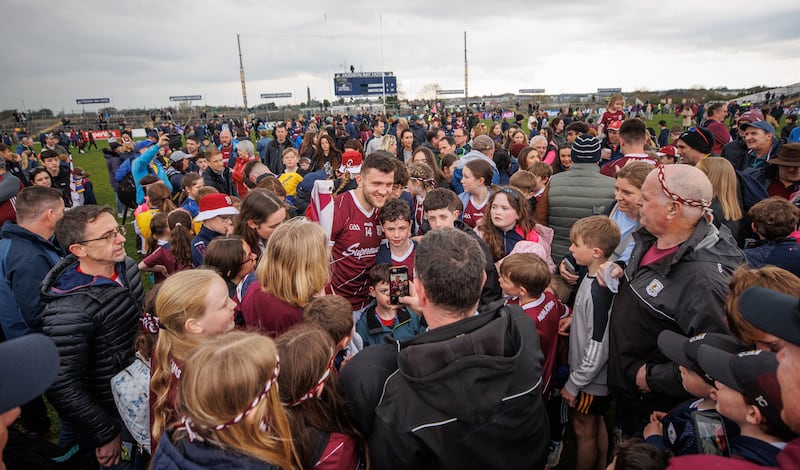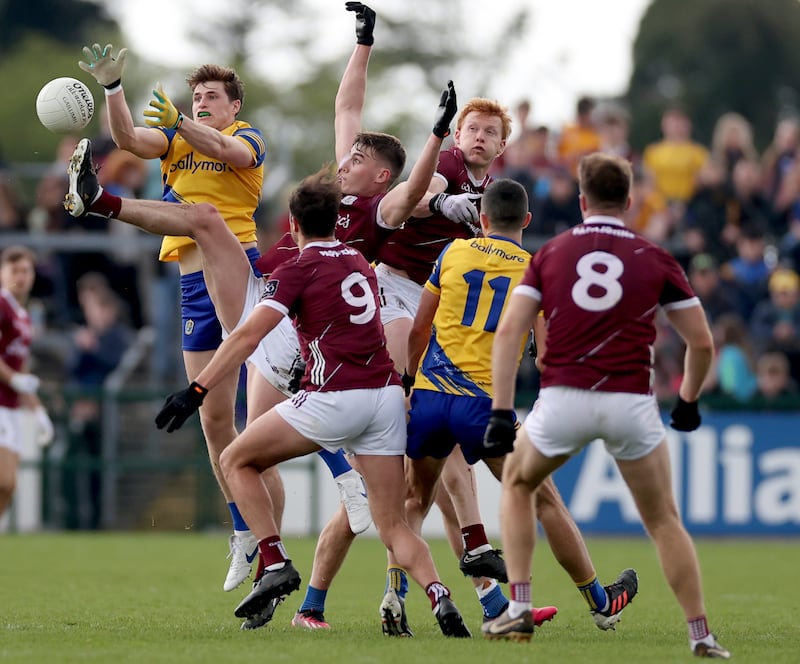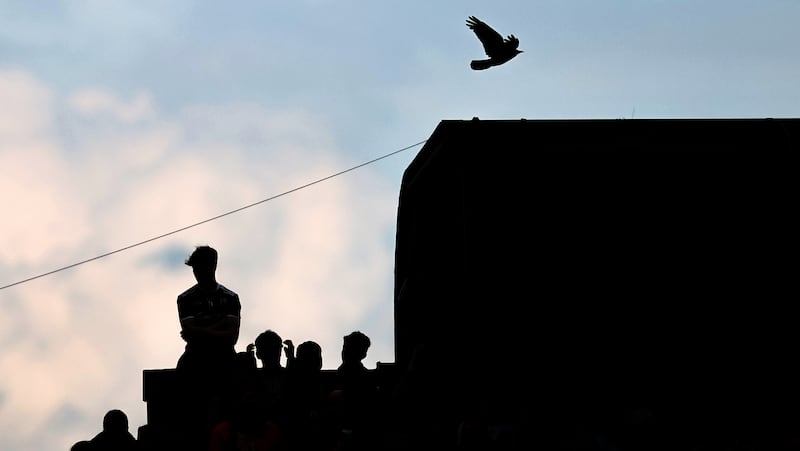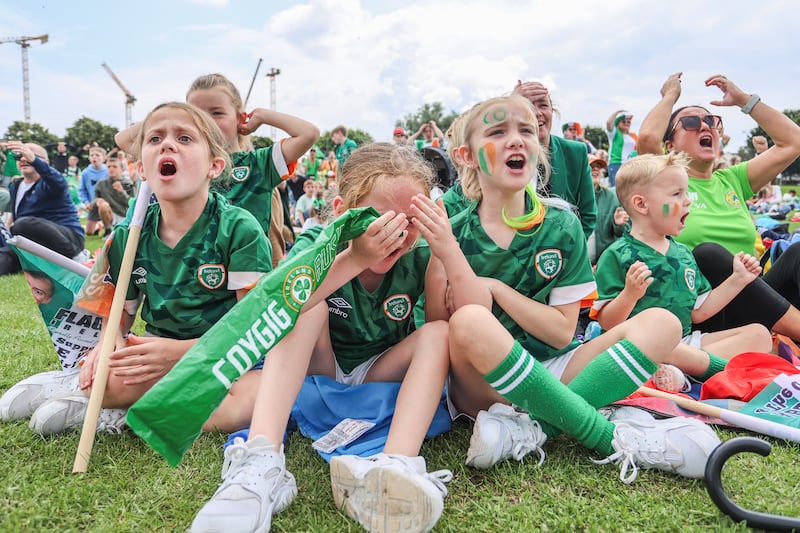Over the weekend, bouncing between everything else going on in the world of sport, I caught some NBA games on television with my boys – the Lakers against the Grizzlies, the Suns and the Clippers, Sacramento against Golden State Warriors. It was good stuff.
On one occasion during our time in the States, I took them to the Spectrum Centre to see Charlotte Hornets play the Chicago Bulls. The memory of that day came rolling back to me over the weekend.
We arrived at the stadium and predictably, with two young fellas in tow, within moments we found ourselves queuing for essential supplies – popcorn and drinks. Just as we were getting served, the game tipped off. Then as we gathered our bits and pieces to make our way inside, Jimmy suddenly declared he needed to go to the toilet. This was not part of Mark Anthony’s plan, who implored upon his brother to hurry up because, “we’re missing the game.”
Just then, a man standing behind us looked at Mark and smiled, “you could miss another few quarters kid but not miss anything.” I can still see the confused look on the faces of the boys. But he was right, it was just a regular season game.
Seán Moran: League’s championship promise may be clouding but it remains bright at the top
Malachy Clerkin: The GAA should make more of St Patrick’s Day - and more of its intercounty stars
Sports Review 2023: Mary Hannigan picks the best quotes from the sporting year
GAA happy that GAAGo has ‘bedded in well’ as 2024 season launches
Playoff basketball is a different animal, everything is on the line, every play is contested, the games are physical, quick, dynamic, the atmospheres in the stadiums are electric. It is high-level organised chaos where more than anything you have big players making big plays.
And watching provincial championship matches over the weekend, you could see things in the GAA had cranked up a level as well.
Which brings me to Dr Hyde Park, where almost 17,000 filed in to watch Roscommon take on Galway.
Conor Carroll’s kickouts all afternoon were impeccable, but given Roscommon won all of their restarts how were Galway so dominant in that first half and four points up going in at the turnaround? That is an important question, for me the answer lies in two key areas.
Firstly, Galway’s ability to get scores was, ironically, in large part a byproduct of Roscommon’s attacking shape.
Roscommon were defending with 14 or 15 men behind the ball. So, when they won possession it was really important two of their three inside men – Ben O’Carroll, Donie Smith or Diarmuid Murtagh – were able to get forward to their designated starting positions, which was anywhere within the Galway square.
Having two forwards inside the square always gave Roscommon a focal point. Interestingly, nobody else went inside the 45, so you had a situation where you could have nine, 10 or 11 players outside the offensive 45 and midfield.
Clearly, if the ball was played inside you would then have a situation where possession was gathered by one of the two forwards, and they instantly had support runners coming from deep. The thinking behind the strategy was clear and clever.

However, in reality it ended up penning an unintended narrative. What I mean by that is, because Roscommon weren’t prepared to send players over the offensive 45 but instead wanted to keep that space for their two players furthest forward, it created a very congested area outside the 45.
That facilitated a very strong midblock press for Galway. Because of the sheer volume of numbers, Galway were then able to consistently get good pressure on the opposing ball carriers, which meant the objective from a Roscommon point of view wasn’t able to be achieved.
They couldn’t lift their head or find the time they needed to play those balls inside. They were unable to get their runners off. Roscommon, in short, couldn’t break through.
It led to frustration and they started going long and aimless, while also getting turned over and giving the ball away too often. Galway were well positioned to capitalise and kick-start transitional moments as soon as they turned the ball over.
A great example of that was in the 24th minute when Roscommon gave possession away and a rapid Galway transition led to Damien Comer’s goalscoring opportunity, from which he didn’t get a goal but ultimately managed to score a point. Such transitional moments were replicated often.
Secondly, whenever Galway did turn the ball over but Roscommon had scrambled back and forced the visitors to go with an established attack against a crowded defence, Padraic Joyce’s men were so good in those phases as well.
[ Jim McGuinness: After all the hype, Mayo face familiar doubtsOpens in new window ]
From a defensive structure point of view, Roscommon had either 14 or 15 men back and were mostly defending deep inside their own 45, focusing on the central plank of the pitch. This made it extremely difficult for Galway to penetrate through the middle.
But what Galway did really well was skirt around the edges of that central plank. Because Roscommon weren’t prepared to come out of that central area, Galway instead found a way just on the margins of the structure to make ground and carve incisions.
It was visible with Cathal Sweeney’s point midway through the first half. Galway kept possession well, showed patience and composure, then eventually Sweeney made the necessary incision at the right time just on the outside right of the Roscommon defensive structure.
Moments later, on the opposite flank, Galway made another clinical incision that resulted in a second Comer goal chance that was ultimately popped over the bar by John Maher.
Paul Conroy played a really important role during this phase. At one stage after winning possession he jabbed his hand in the air – sending up a flare that was indicating: this phase of attacking play is now live.

He’s a heads-up player and a natural playmaker. Most of all he makes good decisions under really heavy pressure. That is the sort of skill set required in established attack, because you are faced with a lot of bodies, so experience and composure are vital.
Those two aspects determined the narrative of the first half – Galway’s capacity to break on Roscommon, in part because of the home side’s attacking structure, and how incredibly well schooled the Tribesmen were when faced with going with an established attack.
For all of that, Roscommon came thundering back after half-time. It was just a total blitz. Ciaráin Murtagh was excellent up front and as a team they were relentless in the early period of the second half, wrestling control of the game back and getting the crowd going. Using the NBA analogy again, it was organised chaos in full swing.
However, Galway’s calm mentality and their refusal to panic was telling during this spell. Also, for me, Comer really stepped up. He was omnipresent.
In a world of keep-ball, his directness is a breath of fresh air, he’s quick, strong, honest, powerful, and brave, all fantastic attributes for a manager to see in an inside forward. He ran at Roscommon, kicked under pressure, created goal chances and made big fetches in the middle of the park. He made a crucial injury-time interception, deep inside his own half, where he came from nowhere to block down a Roscommon player. Moments later he was up the other end fisting the ball over the bar. His performance was top-drawer.
And his goal was the decisive score. As soon as the ball struck the post I instantly thought of Brian McEniff. I don’t ever remember a team-talk where Brian didn’t mention watching out for the ball off the post, he always made a point of being alert to it, defensively and offensively. It was usually the last point in all of his talks.

It was said so often that it almost became something of a running joke within the squad. But he knew those moments of chance could decide a match, that’s why he said it every single day: be prepared for it, be on alert.
Speaking about Comer’s goal after the game on Sunday, while receiving his Man of the Match award, Ciaráin Murtagh mentioned that those were the breaks that can go with you or against you. But Brian had a different take on it, it was a scenario where you had to be ready for the unexpected. Comer was ready, the key to that score was his mental intensity. He was alert to the moment.
I believe Sunday told us a lot about Galway. Padraic Joyce has been on a journey with this team and he has got them to a very high level, consistently. They are extremely fit and strong. It is a squad with a hell of a lot of skilful players and for me they are now very capable of adapting to different phases of play during high intensity games.
There is also a really strong natural confidence about them, I wouldn’t say it’s a cockiness, but they definitely do have an inner belief. They didn’t panic when Roscommon grabbed the momentum after half-time on Sunday, it didn’t jilt Galway off course, they managed the situation and stayed on script. It’s that kind of quiet resilience that wins big games. And trophies.
There’s no doubt it is a dressingroom fuelled by the defeat of last year’s All-Ireland final, but already Galway are showing signs they could be zeroing in on that big day once again in 2023.

















